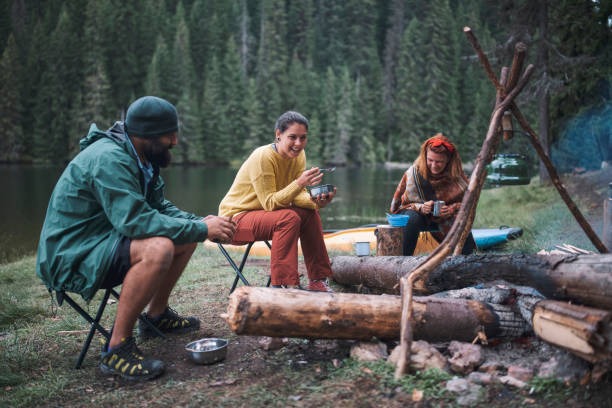Backcountry and bushcraft camping offer a different kind of freedom. You’re far from noise, stores, and people. But with that freedom comes risk. If something goes wrong, help isn’t nearby.
Still, you can enjoy yourself and stay safe with smart planning. You need to think ahead, bring the right tools, and know how to use them. In this article, we will go over several of the ways you can stay safe when you are deep in the backcountry.
1 – Shelter
Staying dry and protected starts with where and how you set up your shelter. The ground matters. Avoid dips where rain can pool or cold air can settle. Stay away from loose rocks, dead trees, and narrow passes that could funnel wind or water. Flat, elevated ground with some natural cover is best. It won’t be perfect, but you’re not looking for luxury. You’re looking for safety and function.
What to consider when building backcountry shelter often comes down to the basics. Keep it simple. Use what’s available. Block wind. Stay off wet ground. Make sure your setup holds under pressure, not just when the weather’s calm. A tarp, cord, and basic knots can go far if you think through placement.
Being exposed for even a few hours in the wrong conditions can lead to trouble. Cold nights without proper cover drain energy. Wet clothing adds to the risk. Think before you pitch, and always give yourself time to make changes before dark.
2 – Pack the right gear
You can’t control everything in the backcountry, but what you bring can make the difference between a good trip and a disaster. Shelter comes first. Whether it’s a tent, tarp, or bivy sack, you need something that keeps wind and rain off your body. A fire-starting method is next. Bring more than one. Waterproof matches, a lighter, and a ferro rod all have their place.
Clean water is extremely important. A filter, purification tablets, or a reliable boil setup are all valid options. Don’t trust any stream or pond, no matter how clean it looks. A solid knife is another must. You’ll use it for food, fire prep, shelter work, and emergencies. Pack a tool that holds an edge and can take a beating. A first aid kit needs more than bandages.
3 – Navigation
Getting lost in the backcountry is common. Trails fade, landmarks blur, and a wrong turn can leave you miles off course. You need to stay alert from the moment you leave the trailhead. Use your map often. Don’t wait until you’re unsure. Learn how to orient yourself with a compass, not just rely on digital tools. GPS can help, but it’s a supplement, not your main defense. A paper map won’t fail.
Make mental notes as you move. Pay attention to ridgelines, streams, and tree patterns. These details help you retrace steps if you have to. If you decide to leave a trail, even briefly, mark your way. Use small, natural indicators or visible landmarks. Don’t assume you’ll remember the route by memory alone.


